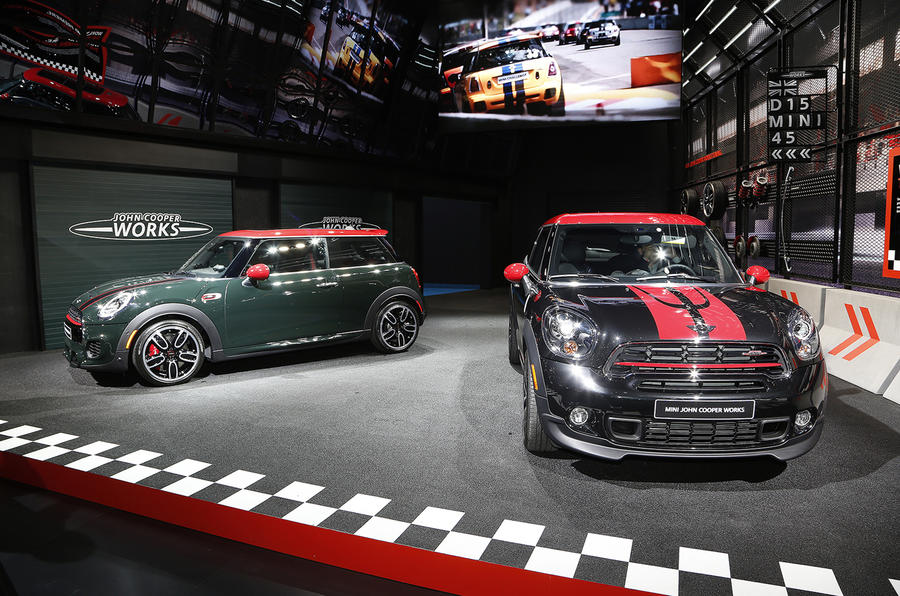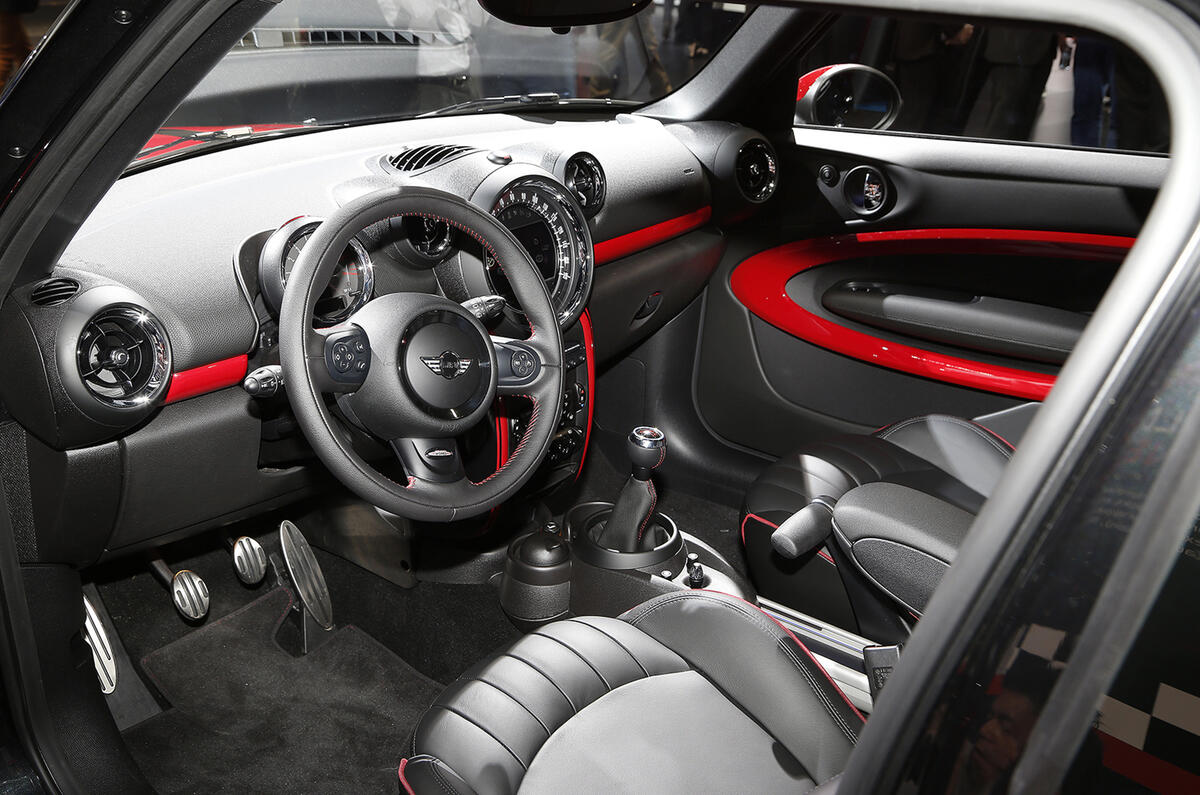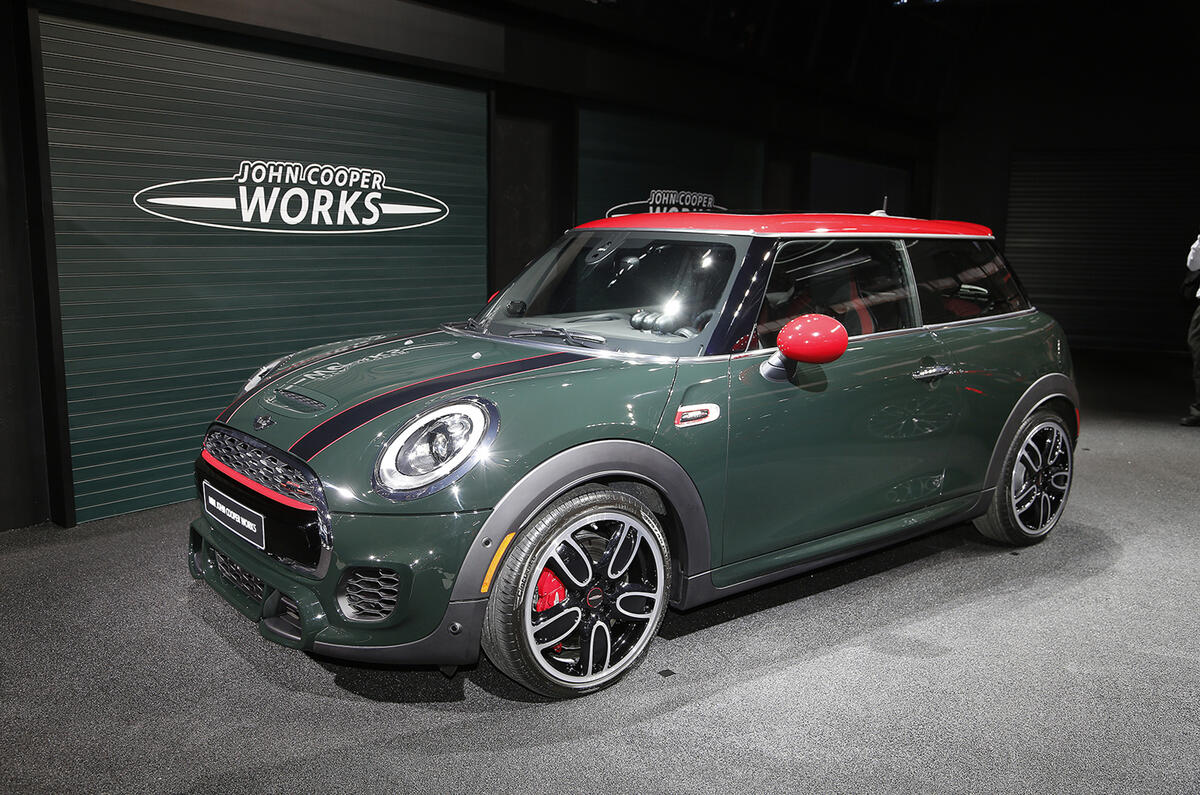The third-generation Mini John Cooper Works has been revealed at the Detroit motor show.
Packing the most powerful engine ever brought to a series production Mini, it is set to go on sale in the UK on 25 April at a starting price close to the £22,460 of its predecessor.
As tradition dictates, the new John Cooper Works is based around the three-door Cooper S and receives a series of styling upgrades to reflect its enhanced performance potential.
2015 Mini Cooper JCW driven - read the first drive verdict here
Included is a unique front bumper with enlarged air ducts, revised LED headlights, altered wheel arch cladding, wider sills, a more prominent spoiler atop the rear hatch, a deeper rear bumper and a pair of centrally mounted chromed tail pipes.
Power for the new front-wheel-drive supermini comes from a revised version of the standard Cooper S’s turbocharged 2.0-litre four-cylinder petrol engine – the B48 as it is known internally at Mini's parent company BMW.
It delivers 228bhp between 5200rpm and 6000rpm, along with 236lb ft from just 1250pm through to 4800rpm.
These are a 20bhp and 29lb ft increases on the turbocharged 1.6-litre four-cylinder petrol engine used by the second-generation Cooper S John Cooper Works, and is 39bhp and 25lb ft more than that offered by the milder version of the turbocharged 2.0-litre four-cylinder petrol engine used in the third-generation Cooper S.
Although it does without a mechanical limited-slip differential, the new JCW receives an electronic differential lock to help transmit its reserves to the road.
Buyers can choose between either a standard six-speed manual gearbox or an optional six-speed automatic transmission with steering wheel-mounted shift paddles.
At 1205kg, the three-door hatchback tips the scales 100kg less than the model it replaces. It is claimed to hit 62mph in just 6.3sec and reach a top speed of 153mph in manual guise – 0.6sec and 7mph faster respectively than the old JCW, and a similar 0.6sec and 9mph improvement on the new Cooper S.
The automatic gearbox adds 15kg to the kerb weight, taking it up to 1220kg. However, shorter first and second gear ratios see it provide added off-the-line performance, giving a 0-62mph time of just 6.1sec and the same 153mph top speed as the manual.
Combined cycle fuel consumption is claimed to be 42.2mpg, along with average CO2 emissions of 155g/km with the manual gearbox. These figures improve to 49.7mpg and 133g/km resepctively when the car is optioned with an automatic gearbox.



















































Join the debate
Add your comment
Looks promising
Using 205 tyres is possible simply because they managed to keep the weight down so there is less mass to control. The madness of wide wheels and tyres was never really about dynamics but about cosmetics and a consequense of growing weight.
Is 228bhp really enough to
Tyre size